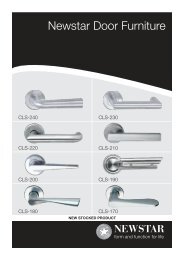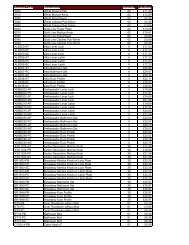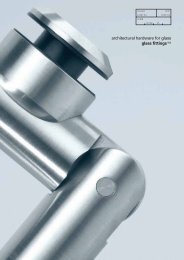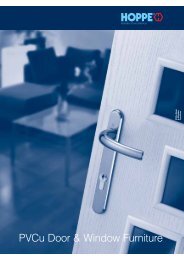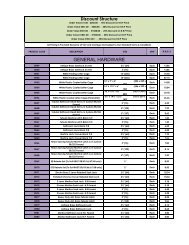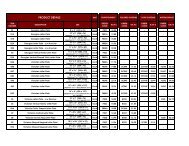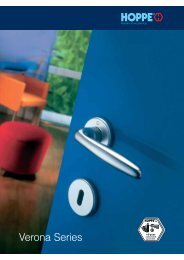Locks & Cylinders - Architectural Hardware Direct
Locks & Cylinders - Architectural Hardware Direct
Locks & Cylinders - Architectural Hardware Direct
You also want an ePaper? Increase the reach of your titles
YUMPU automatically turns print PDFs into web optimized ePapers that Google loves.
<strong>Locks</strong> & <strong>Cylinders</strong><br />
The ARRONE ® range of architectural locks is manufactured to the highest<br />
engineering standards and designed to offer a high price/performance ratio. They<br />
have been successfully type tested to all the requirements of BS EN12209. The<br />
classifi cation achieved is given for each lock separately.<br />
ARRONE Plus ® locks offer additional features and benefi ts.<br />
BS EN12209 Building <strong>Hardware</strong> – mechanically operated<br />
locks, latches and locking plates.<br />
1<br />
2<br />
Digit 1 – Category of use<br />
Three categories of use are identifi ed:<br />
- grade 1: low frequency of use by people with a high incentive to exercise<br />
care and a small chance of misuse, e.g. internal residential doors<br />
- grade 2: medium frequency of use by people with some incentive to<br />
exercise care but where there is some chance of misuse, e.g. internal<br />
offi ce doors<br />
- grade 3: high frequency of use by public or others with little incentive to<br />
exercise care and with a high chance of misuse, e.g. public doors<br />
Digit 2 – Durability<br />
Twelve grades are identifi ed with minimum fi gures for deadbolt and snib<br />
operation, and latch bolt operation with and without side load, as shown.<br />
The side load is applied to the latch bolt when it is being withdrawn.<br />
No of<br />
operations<br />
Increasing side load<br />
grade C grade H grade M grade S grade X<br />
grade B grade G grade L grade R grade W<br />
grade A grade F<br />
3<br />
Digit 3 – Door mass and closing force<br />
Nine grades are identifi ed with maximum fi gures for closing force at various<br />
door masses as shown. Note: closing force is from a standing start: i.e. fully<br />
extended latch bolt in contact with striking plate at start of test.<br />
Maximum<br />
Door mass<br />
closing force up to 100kg up to 200kg above 200kg<br />
15N grade 7 grade 8 grade 9<br />
25N grade 4 grade 5 grade 6<br />
50N grade 1 grade 2 grade 3<br />
4<br />
Digit 4 – Fire resistance<br />
Two grades are identifi ed: -<br />
- grade 0: not approved for use on fi re/smoke door assemblies<br />
- grade 1: suitable for use on fi re/smoke door assemblies tested to<br />
BS EN 1634-1 etc.<br />
Note 1. A grade 1 classifi cation means only that the lock has been designed<br />
for use on fi re/smoke control doors; the actual fi re performance achieved<br />
(e.g. fi re integrity of 30 minutes on a partially glazed timber door etc.) will<br />
be contained in a separate fi re test report.<br />
Note 2. Where a product is intended for fi re/smoke door use (i.e. a “1” in<br />
box 4), it must be possible to demonstrate compliance with the Essential<br />
Requirements of the Construction Products (Amendments) Regulations. It<br />
is recommended that the product should bear the CE mark (see section<br />
on CE marking).<br />
398<br />
LOCKS & CYLINDERS




